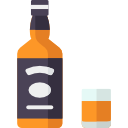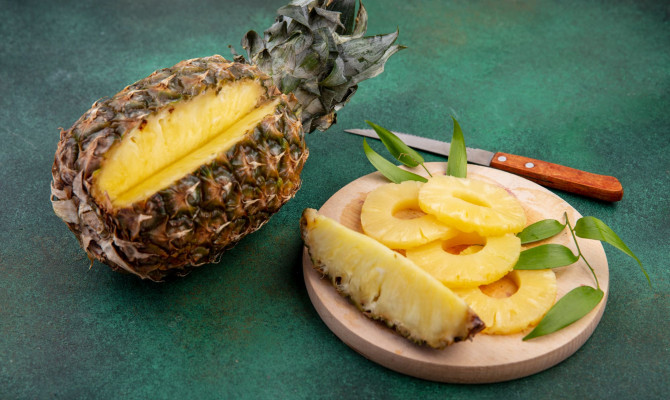Chamomile and its Health Benefits

- Chamomile
- 16 Aug 2023
Overview
What is Chamomile?
Chamomile is a medicinal herb of the daisy family (Asteraceae). Western Asia and Europe are its original home regions. Chamomile tea prepared from the plant’s dried flowers is a popular health beverage. The essential oil of chamomile flowers is used to make several products, such as creams, oils, and inhalers. Chamomile can also be consumed as an herb.

Facts
Facts about Chamomile
- Chamomile is known as Chamomilla recutita, Matricaria recutita, Hungarian Chamomile, True Chamomile, and German Chamomile.
- Chamomile smells like an apple and hence its name ‘Chamomile’ (meaning Earth apple in Greek)
- Chamomile has been used as a remedy to treat several health problems since ancient times.
- Black or green tea can be substituted with caffeine-free chamomile tea.
- Chamomile is also available commercially in tablet form as a health supplement 1Facts| Researched based study from Sciencedirect.com
Properties
Properties of Chamomile
Antioxidant
- Prevents cell damage .
- It neutralizes the harmful free radicle particles in the body .
Anti-inflammatory
- It decreases pain, swelling, and redness by inhibiting the actions of prostaglandins.
Antimicrobial
- It kills the growth of microorganisms such as bacteria, viruses
Anticancer
- It prevents abnormal cell growth in the body by reducing cancerous cells viability.
Components
Nutrition in Chamomile
- According to the United States of Agriculture, Chamomile has no vital source of nutrients and has zero calories 3Components| Researched based study from Usda.gov
Biologically active components of Chamomile
- There are around 120 secondary metabolites (a natural substance produced by plants for purposes other than growth and reproduction) in Chamomile and include thirty-six flavonoids and twenty-eight terpenoids.
- Both flavonoids and terpenoids help in plant defense against various stresses.
- The Roman Chamomile flower has several important phenolic compounds, such as quercetin, apigenin, and patuletin .
The German Chamomile flower has terpenoids, chamazulene(aromatic compound) ,and acetylene derivatives 2Components| Researched based study from Nlm.nih.gov
Useful Parts of the chamomile plant
The flower
- It is used in making teas, capsules, and tablets .
The herb
- It can be used as an oral rinse
- It can be applied to the skin as an ointment.
Formulations
Preparations of chamomile for different uses
Tincture
- In addition, chamomile flower can be used to make a tincture that is one part chamomile flower to four parts water and contains 12% grain alcohol.2Formulations| Researched based study from Nlm.nih.gov
- This remedy is recommended to treat children’s summertime diarrhea and to reduce cramping when taken with purgatives.
Powder
- Many individuals advise using and recommending dry chamomile flower powder for difficulties with well-known conventional health.
Tea
- A teaspoon of chamomile flowers is dipped in boiling water for five to ten minutes. After straining, it can be consumed as a tea beverage.2Formulations| Researched based study from Nlm.nih.gov
Oil
- Aromatherapy and hair care products frequently contain chamomile oil.2Formulations| Researched based study from Nlm.nih.gov
Mouthwash
- For oral rinse or mouthwash, it should be prepared as tea and allowed it cool.
Uses
Common uses of chamomile
Some of the long-established uses of Chamomile
- Burns
- Ulcers
- Rheumatic pain
- Sciatica pain
- Diaper rash
- Chickenpox
- Ear and eye infections
- Blocked tear ducts
- Sleep difficulty
- Skin infection
- Motion sickness and diarrhea
- Anorexia(loss of apetite)
- Indigestion 2Uses| Researched based study from Nlm.nih.gov
Benefits

Health benefits of Chamomile
Protects against cancer
- Chamomile has apigenin antioxidant
- It prevents the growth of tumor cells and also decreases inflammation .
Enhances digestive health
- Chamomile promotes digestive health
- It prevents diarrhea and stomach ulcers 4Benefits| Researched based study from Nlm.nih.gov 5Benefitss| Researched based study from Nlm.nih.gov .
Controls diabetes (high sugar)
- Chamomile lowers the blood sugar level in our body
- It prevents damage to insulin-producing pancreatic cells 2Benefits| Researched based study from Nlm.nih.gov
Enhances the cardiac (heart) health
- Chamomile contains antioxidant flavones which helps lower the blood pressure .
- It lowers the cholesterol level in our body 6Benefits| Researched based study from Nlm.nih.gov
Prevents osteoporosis (bone disease)
- Chamomile flavonoid reduces oxidative stress in the body .
- Maintains the bone density and prevents bone breakage 9Benefits| Researched based study from Nlm.nih.gov
Promotes good sleep
- Chamomile contains apigenin antioxidant .
- Apigenin binds to brain receptors and helps in sound sleep
Relieves common cold
- Inhaling of chamomile steam reduces the common cold symptoms
However, more research is required the prove the fact 2Benefits| Researched based study from Nlm.nih.gov
Fights against gingivitis (gum disease)
- Chamomile has anti-inflammatory and antimicrobial properties
- It reduces gum bleeding and pain when used as oral mouthwash with pomegranate plant extract 7Benefits| Researched based study from Nlm.nih.gov
Relieves menstrual symptoms
- Chamomile reduces anxiety and discomfort before menstrual periods
- It reduces muscle spasms (painful muscle contraction) 8Benefits| Researched based study from Nlm.nih.gov
Helps in healing wounds
- It treats body infections
- It reduces swelling and redness
Relieves anxiety and depression
- Chamomile taken as aromatherapy helps reduce the body’s stress 2Benefits| Researched based study from Nlm.nih.gov
Improves skin health
- Chamomile prevents acne
- It soothes sores and hydrates the skin
Improves immunity
- It protects the body against infections
Improves vaginal inflammation (vaginitis)
- Chamomile reduces vaginal itching and pain
- It reduces vaginal discharge
However, further research is required to prove the fact10Benefits| Researched based study from Nlm.nih.gov
Side effects
Side effects of Chamomile
Although Chamomile has several health benefits, some individuals might experience the following side effects as
- Skin irritation
- Eye irritation
- Chest tightness
- Nausea and vomiting
- Shortness of breath
- Skin rash
- Itchiness
- Stomach problem
- Anaphylaxis reaction(severe allergic reaction)
- Faint
- Sleepiness (when consumed in large doses) 2Side effects| Researched based study from Nlm.nih.gov
People allergic to marigolds, chrysanthemums, and daisies have more chance of having hypersensitivity reactions in the body. Although rare, such individuals may experience an anaphylactic reaction on coming in contact with Chamomile.
Given the absence of data on the safety of chamomile, pregnant women and nursing moms shouldn’t consume it or its products.
Dosage
Dosage of Chamomile
- There is no standard dose of Chamomile. Amounts vary in different studies.
- However, in capsule form, one can consume in the range of 900 to 1200 milligrams daily.
- In tea form, one can consume up to 4 cups per day .
Interactions
Interactions of chamomile with medicines
Anticoagulants (blood thinning medicines)
Chamomile camourin has anticoagulant properties, taking Chamomile and anticoagulant together
- Delays the clotting process .
- It can lead to profuse bleeding .
Cancer medicines (breast, ovarian, uterine cancer)
- Taking estrogen and cancer medicines together can worsen the effect of the medicine
Oral contraceptives (birth control pills)
- Chamomile acts as estrogen in the body so, taking chamomile and birth control pills together decreases the impact of birth control pills .
Other health conditions which forbid Chamomile use
An individual under the following medicines must refrain from chamomile use
- Anxiety medicines
- Sleeping pills
- Anti-seizure medicine
- Diabetes medicine
- High Blood pressure medicine
- High cholesterol medicine
- Migraine medicine
- Rheumatoid arthritis medicine
- Psoriasis medicine
- Mental disorder medication
- Malaria medicine
- Tuberculosis medicine
- Asthma medicine
- Muscle relaxant medicine
- Coumadin medicine 11Interactions| Researched based study from Drug.com
Takeaway
Key Takeaways
- Chamomile is widely used for medicinal purposes as well as for cosmetics .
- Chamomile tea is a caffeine-free healthy beverage with immense benefits it has a good apple taste that makes people enjoy chamomile tea .
- It is rich in antioxidant and antimicrobial properties and helps reduce the risk of several health conditions like heart and cancer diseases .
- Chamomile research is minimal, and more research is warranted in humans to confirm its efficiency and use .
- Patients with health conditions must consult a physician before consuming chamomile tea or its supplements .
Any feedback on this article?
 This Articles content was accurate
This Articles content was accurate Very Informative Article
Very Informative Article I have a question or a comment
I have a question or a comment
 This article contains inaccurate content
This article contains inaccurate content This article was not helpful
This article was not helpful I have a question or a comment
I have a question or a comment
We appreciate your helpful feedback!
Checkout our social pages
References
-
Science Direct
Health Benefits of Traditional Culinary and Medicinal Mediterranean Plants | Facts
-
National Library of Medicine
Chamomile: A herbal medicine of the past with bright future | Components | Uses | Benefits
-
U.S. DEPARTMENT OF AGRICULTURE
CHAMOMILE TEA | Components
-
National Library of Medicine
Antidiarrheal and antioxidant activities of chamomile (Matricaria recutita L.) decoction extract in rats | Benefits
-
National Library of Medicine
Apigenin: A Promising Molecule for Cancer Prevention | Benefits
-
National Library of Medicine
Do Flavonoids Reduce Cardiovascular Disease Incidence or Mortality in US and European Populations?
-
National Library of Medicine
Clinical efficacy analysis of the mouth rinsing with pomegranate and chamomile plant extracts in the gingival bleeding reduction | Benefits
-
National Library of Medicine
Efficacy of Chamomile in the Treatment of Premenstrual Syndrome: A Systematic Review | Benefits
-
National Library of Medicine
Prophylactic Anti-Osteoporotic Effect of Matricaria chamomilla L. Flower Using Steroid-Induced Osteoporosis in Rat Model and Molecular Modelling Approaches
-
National Library of Medicine
Clinical experiences in the pharmacological treatment of vaginitis with a camomile-extract vaginal douche
-
Drugs.com
Chamomile Interactions




































